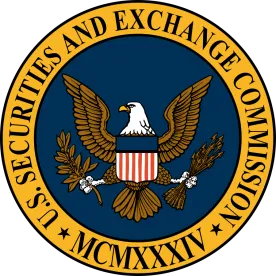On August 17, 2018, the U.S. Securities and Exchange Commission (SEC) announced that it had adopted a wide-ranging set of amendments (the “amendments”) to its disclosure requirements designed to streamline or eliminate those that have become redundant, duplicative, overlapping, outdated, or superseded over time as a result of evolving requirements, changes to U.S. Generally Accepted Accounting Principles (GAAP) or changes in the overall information environment. The amendments reflect the SEC’s ongoing effort to modernize and streamline public company disclosure, as required by Section 72003 of the Fixing America’s Surface Transportation Act and reflected in the SEC’s concept release regarding Business and Financial Disclosure Required by Regulation S-K.
While the amendments impact a wide range of the SEC’s rules and forms, many of the changes are technical in nature when compared to other, more ambitious changes to public company disclosure requirements that remain under consideration by the SEC. A significant portion of the amendments eliminate duplicative disclosure requirements, fix incorrect cross-references and typographical errors, conform disclosure language to other, more recently updated disclosure rules, update language to identify current regulatory bodies and reflect the expiration of phase-in periods.
Although most of the amendments will not have a substantial impact on a public company’s disclosure obligations, registrants should be aware of the following changes:
Market Price, Dividends and Related Stockholder Matters
The amendments make several changes to Item 201 of Regulation S-K, which required certain disclosures regarding an issuer’s common equity and equity compensation plans that historically has appeared in Form 10-K, Form S-1, Form 10 and certain proxy or information statements (Schedule 14A). Most notably, the SEC eliminated the requirement to provide high and low trading prices of common stock and the issuer’s dividend history for the past two years and any interim period. Instead, registrants whose common stock is traded on an exchange will be required to disclose the trading symbol for their common equity. The SEC noted that the elimination of these requirements was justified based on the widespread availability of trading price information, as well as overlapping requirements in Regulation S-X. In addition, the SEC also eliminated the requirement in Item 201 of Regulation S-K to disclose restrictions on the ability to pay dividends as a result of overlapping requirements in Regulation S-X.
Ratio of Earnings to Fixed Charges
The amendments eliminate the requirement to include a calculation of a registrant’s ratio of earnings to fixed charges in the registration statement and prospectus supplement for debt securities or preferred stock and on an ongoing basis in periodic reports. The SEC noted that the wide availability of analytical tools and information allowing investors to measure an issuer’s ability to service fixed financing expenses and other existing disclosure requirements provide investors with sufficient information and resources to accomplish the original objective of the disclosure requirement.
Description of Business
The amendments eliminate several disclosure requirements in Item 101 of Regulation S-K relating to the description of the issuer’s business that historically has appeared in Form 10-K, Form S-1 and Form 10, although in all cases the SEC noted that the elimination of such requirements was justified given that they overlapped with existing disclosure requirements in GAAP.
-
Research and Development Activities. The amendments eliminate the requirement to disclose the amounts spent on research and development activities in the description of its business due to GAAP requiring similar disclosure in the issuer’s financial statements. The SEC noted, however, that disclosure on trends in research and development activities, to the extent material, is required to be disclosed in MD&A by Item 303 of Regulation S-K.
-
Segment Information. The amendments eliminate the requirement to provide certain segment financial information and discussion of interim segment performance that may not be indicative of future operations due to GAAP requiring similar disclosure in the issuer’s financial statements.
-
Geographic Areas. The amendments eliminate the requirement to provide financial information by geographic area, including a discussion of facts that indicate the three-year financial data for geographic performance may not be indicative of current or future operations in interim periods and risks associated with foreign operations. Although the SEC supported the elimination of these requirements due to their overlap with GAAP and Item 303 of Regulation S-K, the SEC also revised Item 303 to explicitly reference “geographic areas” to emphasize that issuers may be required to discuss geographic areas in MD&A when management believes that such a discussion would be appropriate to understand the issuer’s business and results of operations. Further, the SEC noted that the disclosure of any material risks to an issuer associated with foreign operations should be encompassed within the other requirements of Regulation S-K, including the requirement in Item 503(c) to disclose significant risk factors.
Internet Address
The amendments include a requirement for an issuer to disclose in registration statements and in Form 10-K its internet address (if it has one). Previously, disclosure was encouraged, but not required for all issuers. The release notes that “the Commission has provided guidance about the liability framework for certain types of disclosures on company websites.” There is no indication this amendment changes the liability framework.
Regulation S-X, S-K and GAAP
The amendments include a number of changes to Regulation S-X meant to eliminate disclosure requirements that are duplicative of GAAP or otherwise outdated or superseded due to subsequent regulations. In addition, the SEC examined a number of provisions of Regulation S-X and S-K (including required disclosures regarding major customers in Item 101 of Regulation S-K and required disclosures on legal proceedings in Item 103 of Regulation S-K) that overlap with GAAP, but also include incremental disclosure requirements not found in GAAP. The SEC elected to retain these requirements and refer the overlapping provisions to the Financial Accounting Standards Board (FASB) for potential inclusion in GAAP. The SEC noted that if FASB determines to incorporate any of these incremental requirements, then that would pave the way for elimination of their counterparts in Regulation S-X and Regulation S-K.





 />i
/>i

